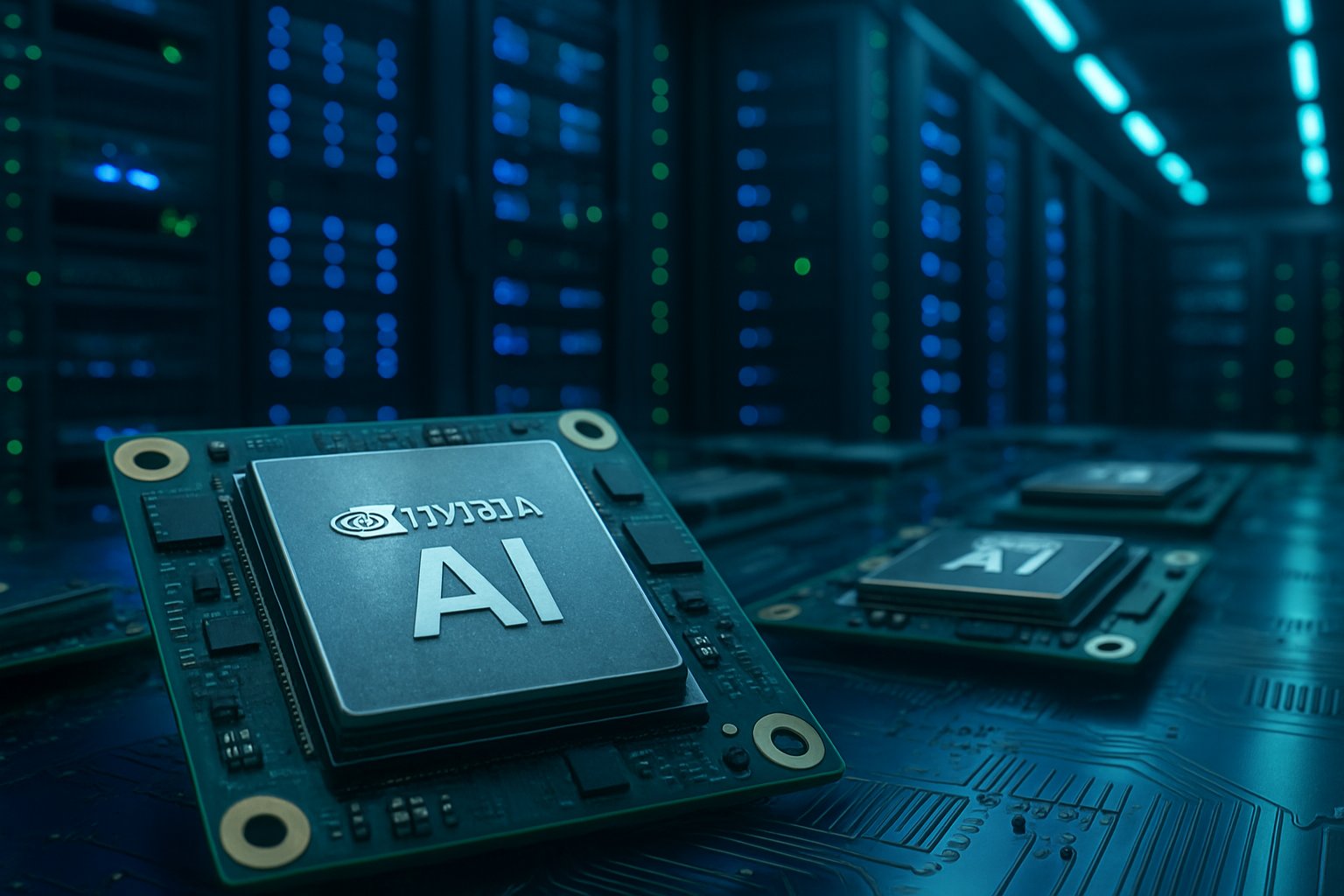
AI CERTS
5 hours ago
Nvidia Surges on AI Chip Demand, Record Earnings
Therefore, executives emphasized multi-year visibility anchored by the Blackwell GPU family. This article dissects the numbers, market reactions, and future implications. Professionals seeking deeper expertise can enhance strategic insight with the AI Business Intelligence™ certification.
Record Quarter Financial Overview
Revenue reached $57.0 billion, a sequential jump of 22% and a historic watermark for any Semiconductor supplier.

GAAP net income hit $31.91 billion, while diluted EPS landed at $1.30, underscoring exceptional Earnings power.
Gross margin expanded to 73.4%, reflecting pricing discipline and favorable mix toward premium Blackwell accelerators.
Management guided fourth-quarter revenue to $65.0 billion plus or minus 2%, surpassing consensus by several billion.
These figures cement Nvidia’s leadership. Consequently, AI Chip Demand appears far from peaking.
Nevertheless, understanding what drives these results requires deeper scrutiny of demand catalysts.
Drivers Behind Surging Demand
Blackwell GPUs powered the quarter, delivering higher throughput per watt and lower total cost for large-scale training.
Furthermore, inference workloads accelerated as generative services expanded across cloud platforms and consumer applications.
Nvidia disclosed that four hyperscale customers represented 61% of sales, reflecting concentrated yet explosive AI Chip Demand.
- Cloud GPU capacity reported “sold out” through 2026
- OpenAI, Anthropic, and Google Cloud committed multi-year Blackwell deployments
- SemiAnalysis benchmarks showed 10x throughput per megawatt over previous generation
- Government supercomputer projects adopted Rubin systems for scientific workloads
Collectively, these catalysts intensified buying urgency. Consequently, suppliers throughout the technology chain face capacity pressure.
However, market forces extend beyond operational momentum and include investor perceptions.
Opportunities For Data Centers
Data Centers remained the primary revenue engine, generating $51.2 billion and growing 66% year over year.
Moreover, cloud operators are shifting toward rack-scale NVL72 designs, which maximize density and streamline deployment.
Network innovations like Spectrum-X reduce bottlenecks and raise utilization, thereby lowering total Data Centers spend per query.
Consequently, AI Chip Demand couples with infrastructure upgrades, unlocking adjacent revenue for switches and software.
Data center upgrades amplify Nvidia’s moat. Nevertheless, investor sentiment can sway future capital allocation.
The following section explores how markets interpreted the blockbuster Earnings.
Investor Reactions And Risks
Wall Street applauded the print; Jefferies called it a “validation moment” for generative AI exposure.
Additionally, Wedbush labeled Blackwell momentum an early-innings story, raising price targets across Semiconductor peers.
In contrast, Reuters highlighted rent-back agreements that reached $26 billion, signaling complex revenue recognition.
Analysts warned that concentrated AI Chip Demand among few customers may amplify volatility if cloud budgets tighten.
Markets see both growth and fragility. Therefore, comprehensive risk analysis remains essential.
Competitive dynamics further color that risk panorama.
Competitive Landscape And Challenges
While Nvidia leads in accelerators, hyperscalers are designing custom silicon to curb long-term Semiconductor reliance.
Meanwhile, AMD and emerging startups tout lower price points, targeting inference slices with specialized ASICs.
Export controls add pressure, restricting top-tier GPUs from certain regions and redirecting AI Chip Demand elsewhere.
Nevertheless, Nvidia’s software stack and developer ecosystem create switching costs that competitors struggle to match.
The competitive chessboard evolves quickly. Consequently, strategic partnerships will decide share allocation.
Guidance offers another window into management expectations and timelines.
Strategic Guidance Into 2026
CFO Colette Kress projected $65.0 billion fourth-quarter revenue with gross margin near 74.8%.
Furthermore, the company cited visibility into $500 billion in pipeline orders, anchored by persistent AI Chip Demand.
Subsequently, management emphasized sustained Data Centers investment and return of capital via expanded buybacks.
Such forward signals bolster confidence, yet they assume macro stability and continuing technology leadership.
Guidance underscores management optimism. However, prudent observers will monitor execution milestones.
The article concludes with actionable insights and next steps.
Conclusion And Future Outlook
Nvidia’s latest quarter illustrates extraordinary scalability, fueled by relentless AI Chip Demand and robust Earnings expansion.
Moreover, Data Centers transformation and Semiconductor innovation appear intertwined, shaping global infrastructure roadmaps.
Nevertheless, concentration risks, competitive encroachment, and regulatory uncertainty warrant continued vigilance.
Consequently, professionals should monitor customer diversification, rent-back disclosures, and benchmark transparency.
Additionally, readers can deepen analytical proficiency through the linked certification and stay ahead of market shifts.
Explore fresh research, secure strategic skills, and position your organization to capitalize on accelerating AI Chip Demand.
Ultimately, sustained AI Chip Demand will define Semiconductor investment cycles through the decade.



